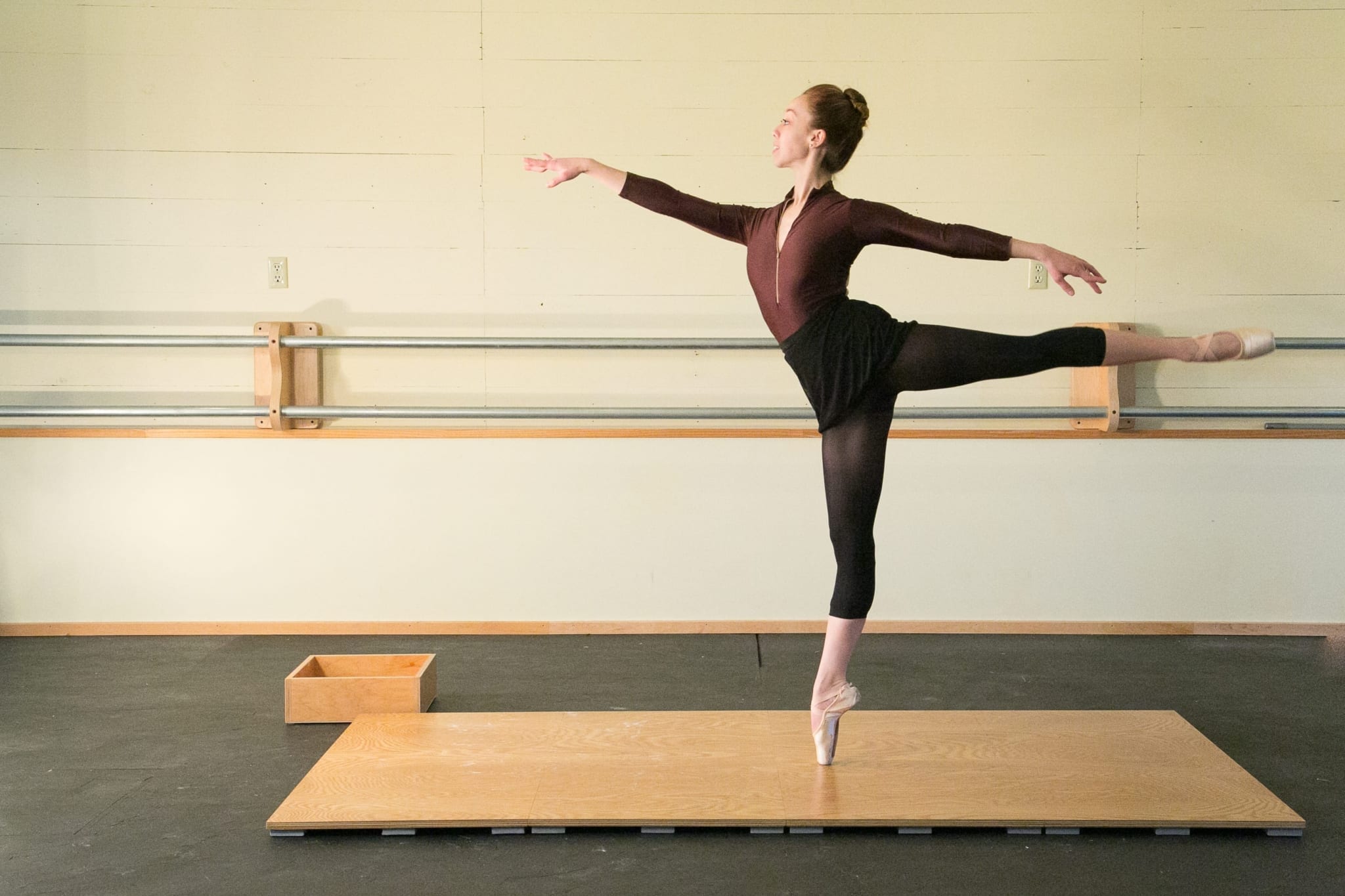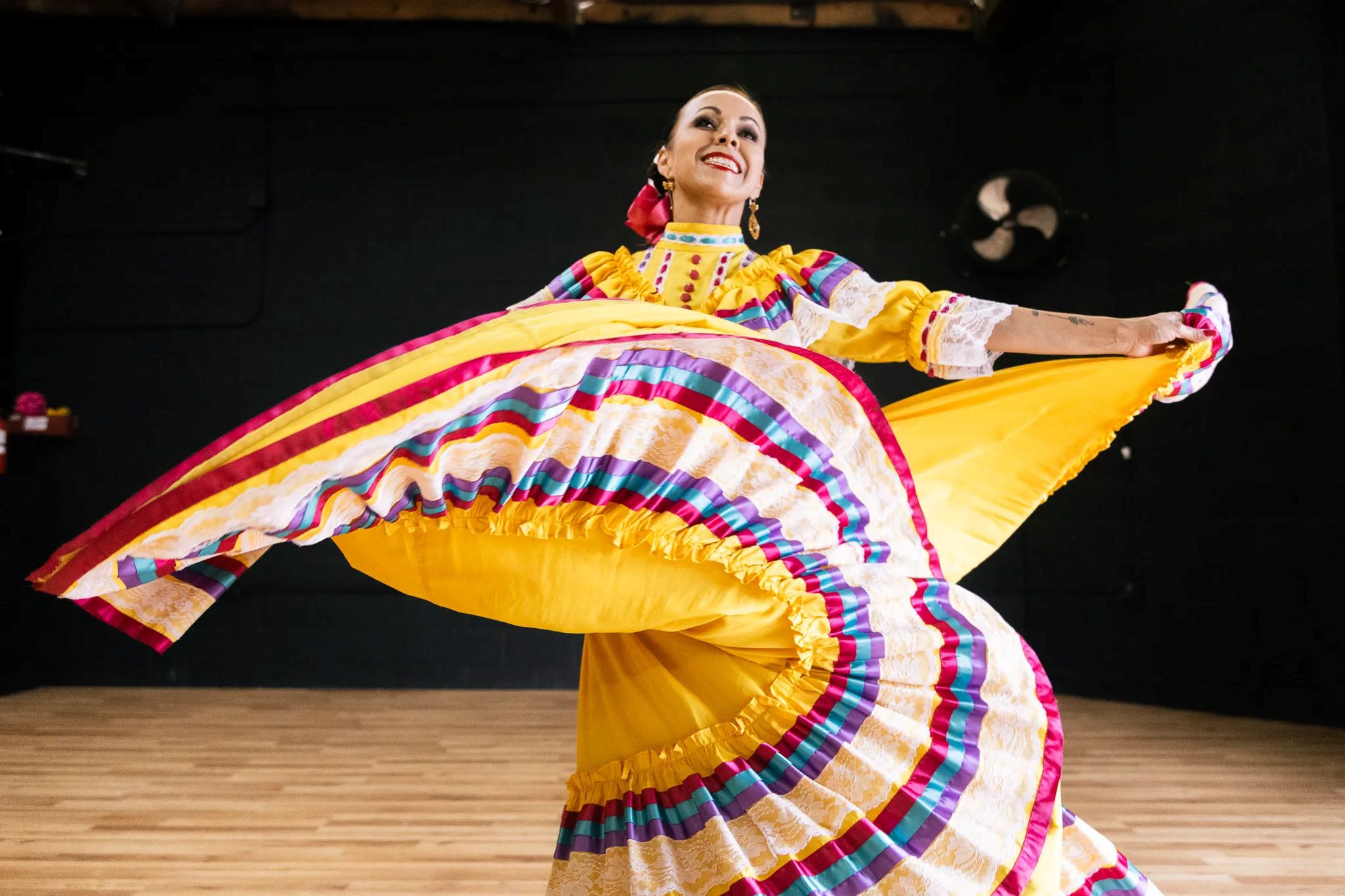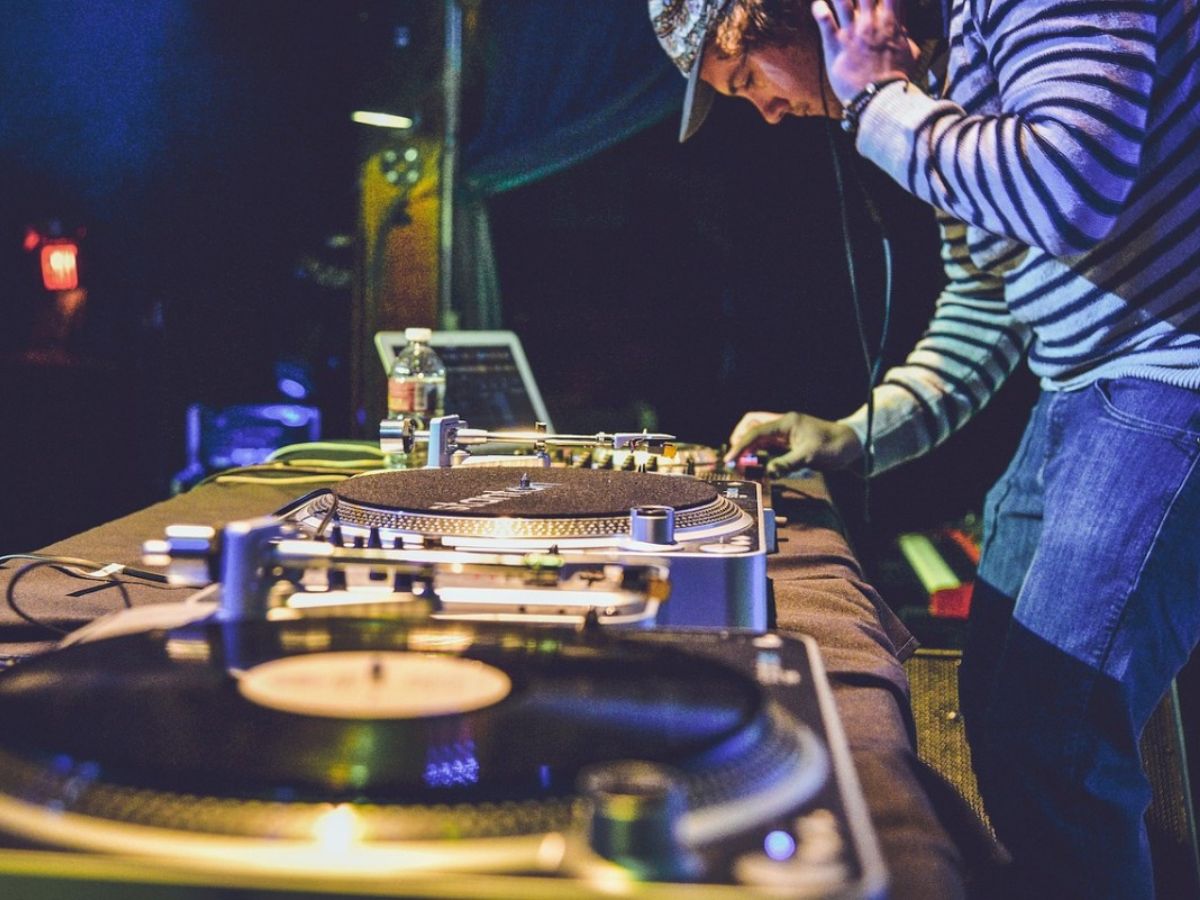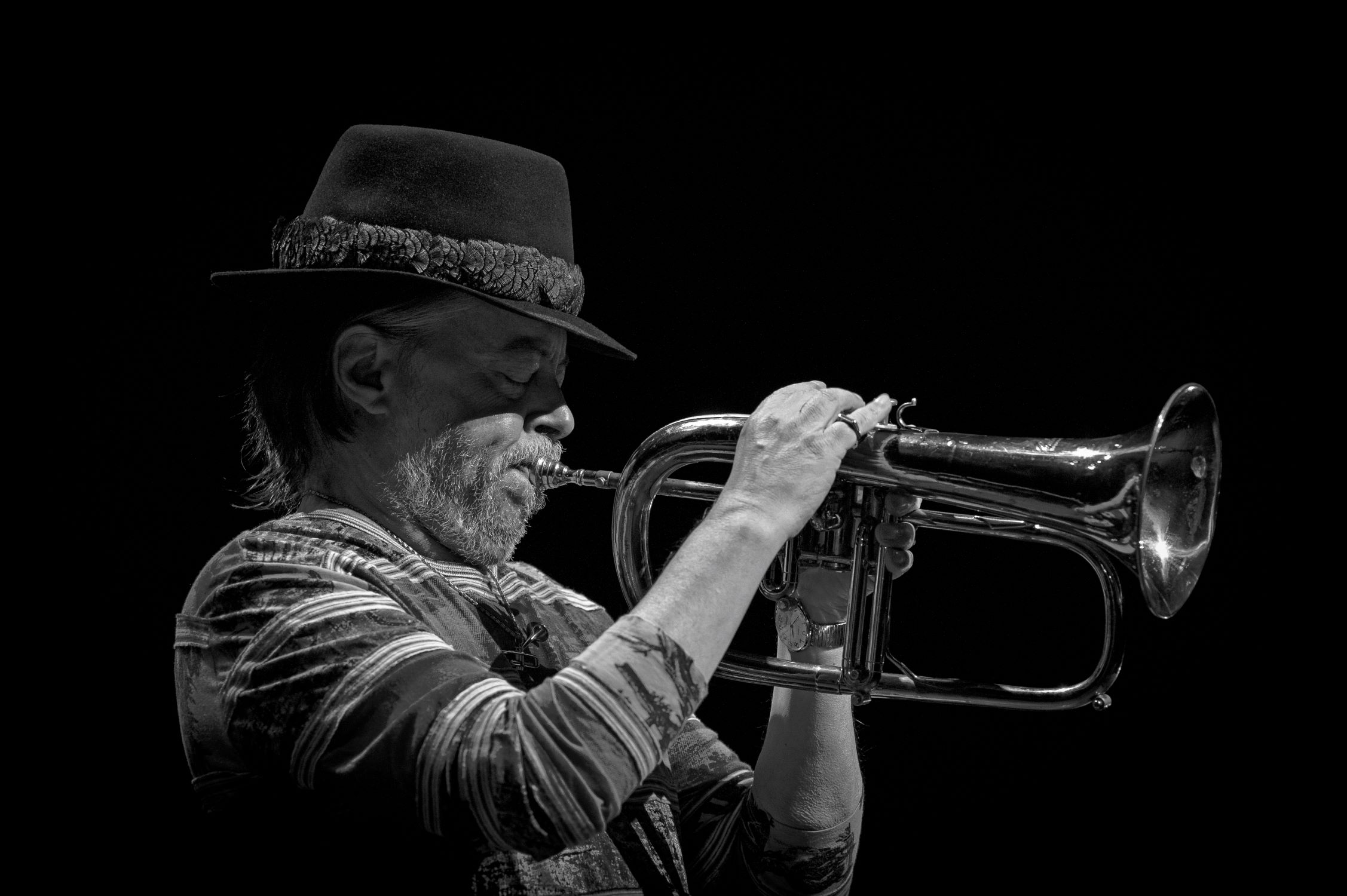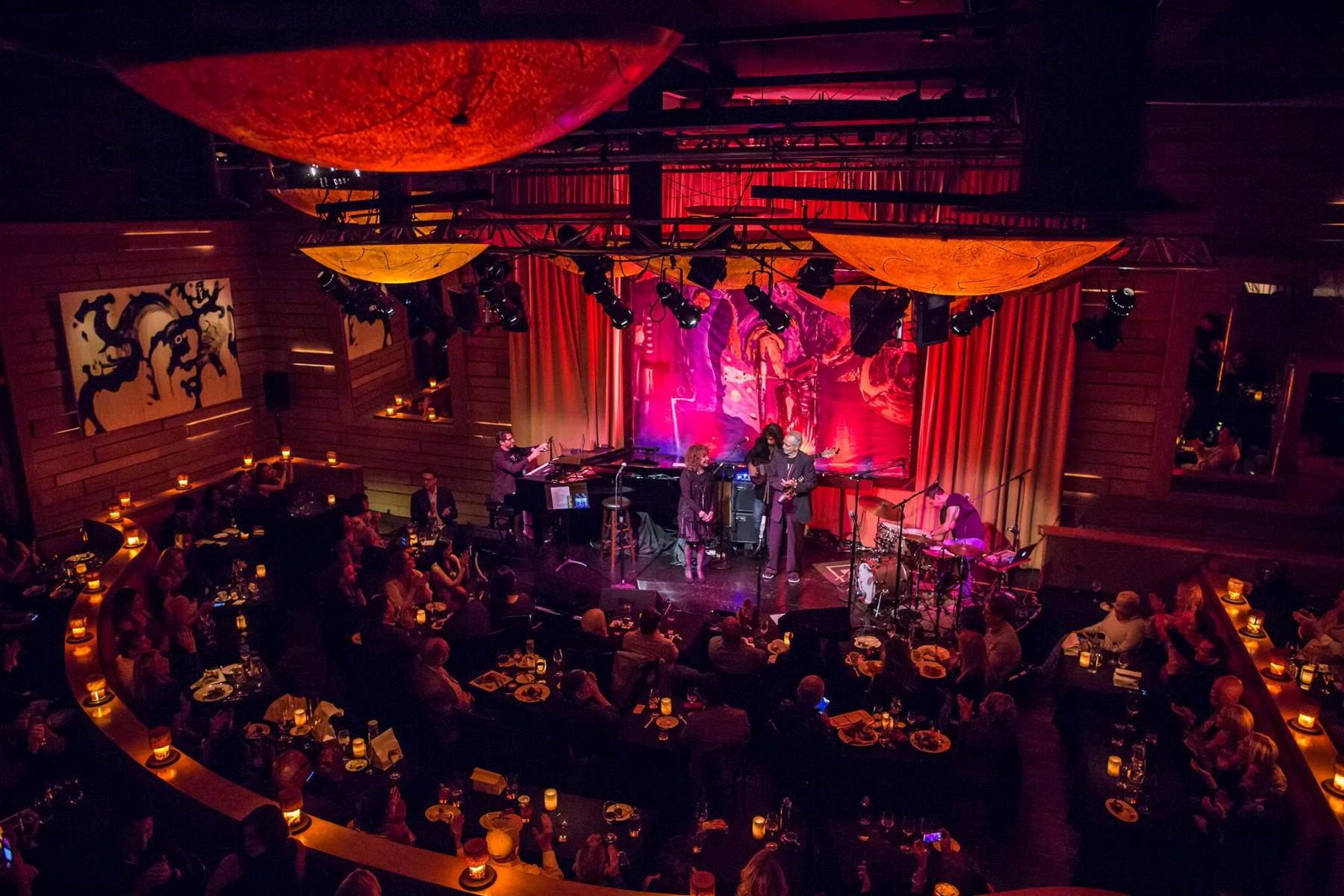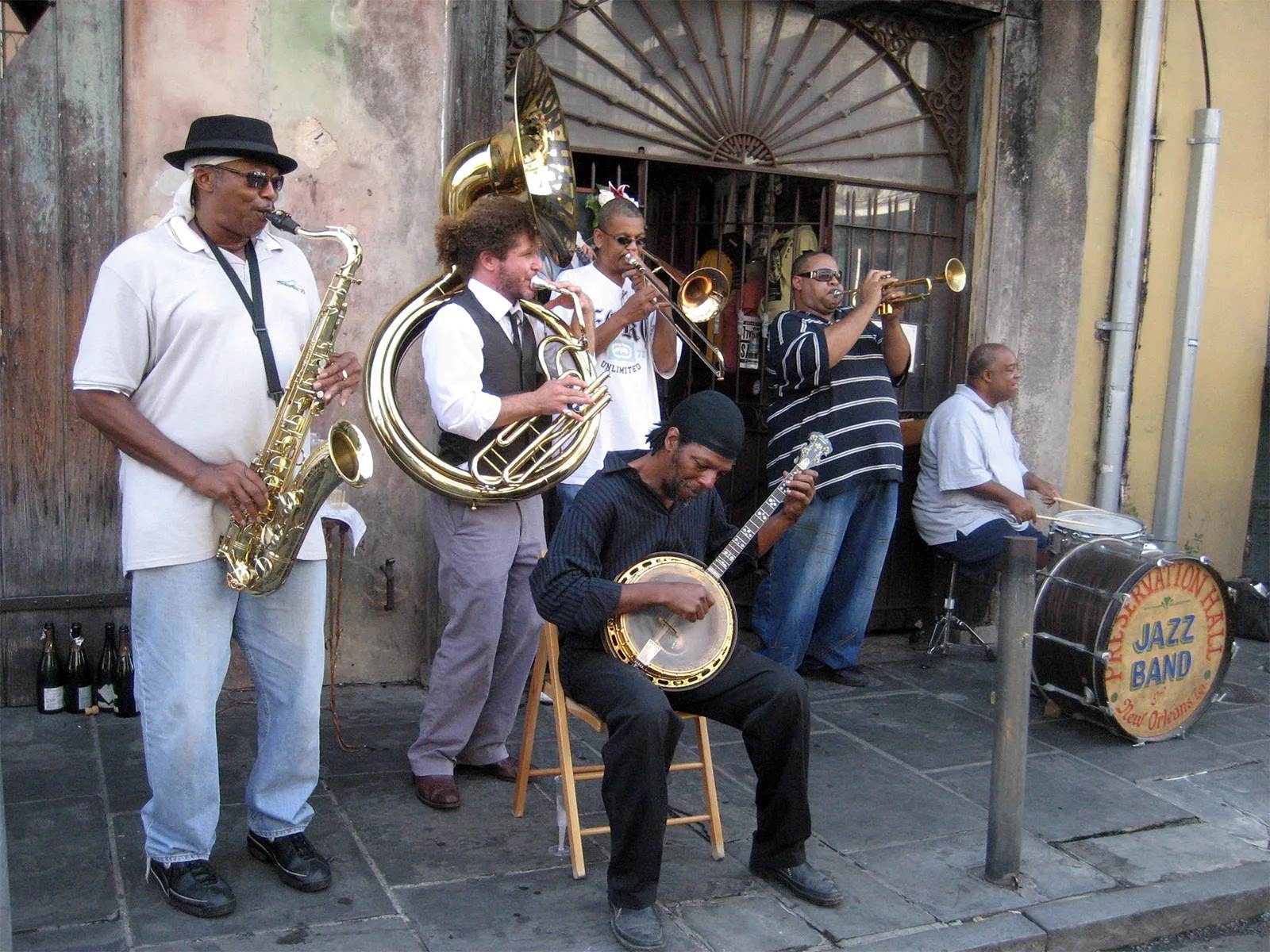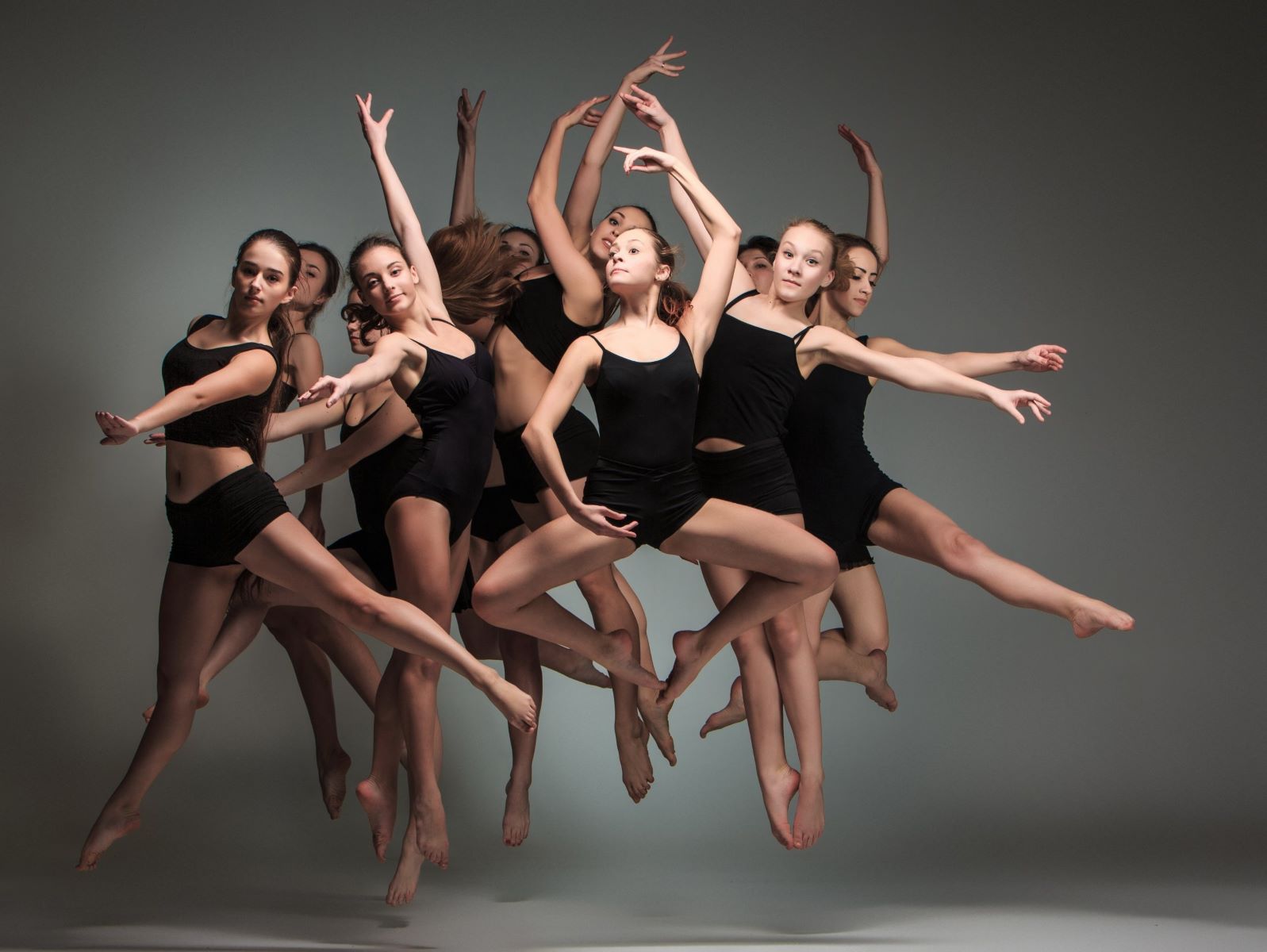

Jazz
What Is Jazz Dance?
Modified: January 22, 2024
Discover the artistry and rhythm of jazz dance. Learn about its history, techniques, and influence in the world of dance. Unleash your passion for jazz today!
(Many of the links in this article redirect to a specific reviewed product. Your purchase of these products through affiliate links helps to generate commission for AudioLover.com, at no extra cost. Learn more)
Table of Contents
Introduction
Jazz dance is a vibrant and dynamic form of dance that originated in the early 20th century. Known for its energy, syncopated rhythms, and improvisation, jazz dance has become popular worldwide for its versatility and expressive movements. It draws inspiration from the syncopated rhythms and improvisational nature of jazz music, blending elements of various dance styles such as ballet, modern dance, and African dance.
With its origins rooted in African American culture, jazz dance emerged as a rebellious and expressive art form during the Harlem Renaissance in the 1920s. It broke away from the formalism of ballet and provided a platform for dancers to showcase their individuality and creativity. Over the years, jazz dance has evolved and incorporated influences from other dance styles, reflecting the cultural diversity of its practitioners.
Jazz dance is characterized by its high energy, intricate footwork, and fluid body movements. It emphasizes strength, flexibility, and rhythm, requiring dancers to possess a strong technical foundation and musicality. From fast-paced and explosive movements to smooth and sultry choreography, jazz dance has the ability to captivate audiences and evoke a range of emotions.
Throughout its history, jazz dance has been influenced by various styles and dance pioneers. From the innovative choreography of Bob Fosse to the vibrant and theatrical performances of Jack Cole, these influential figures have left a lasting impact on the development of jazz dance. Today, jazz dance continues to evolve and innovate, with dancers and choreographers pushing the boundaries of the art form.
Jazz dance has also made a significant impact on popular culture, being featured in movies, music videos, and stage productions. Its fusion of different dance styles and its ability to adapt to various music genres have made it a popular choice for entertainment and artistic expression. From the iconic jazz hands to the smooth and sensual movements, jazz dance has become synonymous with energy, rhythm, and passion.
To excel in jazz dance, dancers must undergo rigorous training and develop specific techniques. From mastering intricate footwork to perfecting timing and musicality, jazz dancers work diligently to create visually stunning performances. Whether it is through improvisation or intricate choreography, the technical precision and artistic expression in jazz dance are paramount.
In this article, we will delve into the origins and characteristics of jazz dance, explore its various styles and influences, highlight famous jazz dancers, examine its presence in popular culture, discuss the training and technique involved, and ultimately, gain an appreciation for jazz dance as a unique and expressive art form.
Origins of Jazz Dance
The roots of jazz dance can be traced back to African American culture, particularly the dance traditions brought over by enslaved Africans. These traditions, deeply rooted in storytelling, rhythm, and community, laid the foundation for the development of jazz dance as it is known today.
During the late 19th and early 20th centuries, African American communities in the United States, particularly in New Orleans, began blending their African dance styles with European influences. This fusion of cultures gave birth to a new form of dance that incorporated elements of African dance, European social dances, and even minstrel shows.
One significant influence on jazz dance was the presence of shuffling and syncopated rhythms in African dances. These rhythmic patterns, characterized by intricate footwork and polyrhythms, became a fundamental aspect of jazz dance, setting it apart from other dance forms.
Furthermore, the social dances of the time, such as the cakewalk and the Charleston, heavily influenced the development of jazz dance. The cakewalk, with its exaggerated movements and humorous mimicry of upper-class white society, embraced elements of satire and parody.
The Charleston, popularized in the 1920s, introduced a new level of exuberance and freedom in dance. Its fast-paced footwork and energetic movements became iconic in the jazz age and laid the groundwork for the evolving jazz dance form.
As African American communities migrated from the South to urban centers, particularly to Harlem in New York City during the Harlem Renaissance of the 1920s, jazz dance flourished. The vibrant cultural scene in Harlem provided a platform for artistic expression and innovation.
At the time, talented choreographers such as Jack Cole and Katherine Dunham began incorporating the rhythmic and improvisational elements of jazz music into their dances. They introduced new movements and techniques that would ultimately shape the evolution of jazz dance.
Moreover, the jazz music scene in New York City played a pivotal role in the development and popularization of jazz dance. Renowned jazz musicians like Duke Ellington and Louis Armstrong created an electrifying atmosphere that inspired dancers to explore new ways of moving and expressing themselves.
Through the fusion of African dance, European influences, and the unique cultural experiences of African Americans, jazz dance emerged as a powerful and expressive art form. Its origins are deeply rooted in the history and experiences of African American communities, and it continues to be a celebration of their resilience, creativity, and vibrant cultural heritage.
Characteristics of Jazz Dance
Jazz dance is known for its distinct characteristics that set it apart from other dance styles. These characteristics encompass both the technical aspects and the overall aesthetic of the dance form.
One of the defining characteristics of jazz dance is its emphasis on energy and dynamism. Jazz dancers are known for their explosive movements, showcasing their athleticism and strength. The fast-paced nature of jazz dance demands high levels of energy and stamina from dancers, as they execute intricate footwork and agile leaps and turns.
Syncopated rhythms are another hallmark of jazz dance. Syncopation refers to the accenting of musical beats that are not typically emphasized. Jazz dancers use their bodies to interpret and express the complex rhythms of the music, creating a visually captivating experience. They often play with rhythmic variations and unexpected accents, adding a unique flair to their performances.
Jazz dance is characterized by its versatility and adaptability. It seamlessly blends elements from different dance styles, such as ballet, modern dance, and even hip hop. This fusion allows jazz dancers to experiment with various movements and stylistic approaches, making each performance distinct and innovative.
Expressivity is another key characteristic of jazz dance. Dancers use their bodies to convey emotions and tell stories, engaging the audience on an emotional level. From the subtle nuances in facial expressions to the fluidity of their movements, jazz dancers are skilled in conveying the mood and intent of the choreography.
Improvisation is a vital component of jazz dance. Jazz dancers often have the freedom to improvise and interpret the music in real-time, allowing for moments of spontaneity and individuality. This improvisational aspect adds a sense of excitement and unpredictability to jazz dance performances, making each dance unique and captivating.
Jazz dance also emphasizes style and showmanship. Performers are encouraged to develop their own individual style and personality on stage. Whether it’s through flashy costumes, intricate hand movements, or intricate choreographic sequences, jazz dancers aim to captivate and entertain audiences with their stage presence and charisma.
Overall, jazz dance is characterized by its energy, syncopated rhythms, versatility, expressivity, improvisation, and emphasis on style. These elements work together to create a visually stunning and emotionally engaging dance form that continues to evolve and captivate audiences worldwide.
Influences on Jazz Dance
Jazz dance is a constantly evolving art form that has been influenced by various styles and cultural movements throughout history. These influences have shaped and enriched the vocabulary and techniques of jazz dance, making it the dynamic and diverse form that it is today.
One of the major influences on jazz dance is African dance. The rhythms, movements, and storytelling elements of African dance have deeply influenced the development of jazz dance. African dance traditions emphasize the use of the entire body, grounded movements, and polyrhythms, all of which have become integral to the vocabulary of jazz dance.
The influence of European folk dances should not be overlooked either. As African Americans embraced European social dances, such as the waltz and the polka, during the early 20th century, these dances became integrated into the evolving jazz dance form. The blending of European and African dance styles resulted in unique movements and an innovative fusion of cultures.
The emergence of vaudeville and minstrel shows also played a significant role in shaping jazz dance. The exaggerated movements and comedic elements found in these performances influenced the development of jazz dance, particularly in terms of style and showmanship. This influence can still be seen in the dramatic and expressive nature of jazz dance today.
Another major influence on jazz dance is the Harlem Renaissance. This cultural and artistic movement, centered in Harlem in the 1920s and 1930s, brought together artists, musicians, and dancers and provided a platform for experimentation and innovation. The vibrant jazz music scene in Harlem inspired dancers to explore new movements and techniques, leading to the evolution of jazz dance as a distinct art form.
The work of influential choreographers, such as Jack Cole and Katherine Dunham, has also left a lasting impact on jazz dance. Jack Cole, often referred to as the “father of theatrical jazz dance,” integrated elements of ballet and modern dance into jazz dance, creating a fusion of styles that became synonymous with jazz dance. Katherine Dunham incorporated Afro-Caribbean dance movements and cultural themes into her choreography, further expanding the vocabulary and cultural influences of jazz dance.
In recent years, the influence of street dance and hip hop on jazz dance has become prominent. Jazz dance now incorporates elements of street dance styles such as breaking, popping, and locking, adding a contemporary edge to the traditional jazz dance form. This infusion of street dance styles has made jazz dance more relatable and accessible to a younger generation of dancers and has brought a fresh and urban flair to the art form.
Overall, the influences on jazz dance are diverse and multifaceted, reflecting the rich cultural heritage and artistic innovations of various communities throughout history. From the roots of African dance to the fusion of European and American styles, these influences have shaped the techniques, movements, and stylistic elements that make jazz dance a vibrant and ever-evolving art form.
Styles of Jazz Dance
Jazz dance encompasses a wide range of styles, each with its own unique characteristics and influences. From classic Broadway-style jazz to contemporary fusion styles, the versatility of jazz dance allows for endless creativity and expression. Here are some of the most popular styles of jazz dance:
- Classic Jazz: Classic jazz dance, also known as Broadway jazz, emerged during the Golden Age of Broadway musicals. It is characterized by its theatricality, precise technique, and intricate choreography. Classic jazz often features stylized movements, kicks, pirouettes, and iconic jazz hands. This style of jazz dance can be seen in iconic musicals like “West Side Story” and “Chicago.”
- Latin Jazz: Latin jazz dance blends elements of Latin American music and dance styles with jazz. It incorporates movements from salsa, mambo, and other Latin dance forms, infused with the energy and rhythms of jazz. Latin jazz dance is known for its lively footwork, hip movements, and synchronized partner work.
- Funk and Street Jazz: Funk and street jazz are influenced by urban street dance styles, including hip hop, breaking, and popping. This style of jazz dance is characterized by its high energy, sharp movements, and incorporation of isolations and intricate footwork. Funk and street jazz often feature freestyle sections and showcase individual expression and personal style.
- Lyrical Jazz: Lyrical jazz is a fusion of jazz and contemporary dance. It combines the fluidity and grace of contemporary dance with the sharp and rhythmic movements of jazz. Lyrical jazz emphasizes storytelling, emotional expression, and dynamic musicality. Dancers often use the lyrics and emotions of the music to inspire and guide their movements.
- Commercial Jazz: Commercial jazz is heavily influenced by the entertainment industry and is commonly seen in music videos, commercials, and concert performances. This style of jazz dance blends elements of jazz, hip hop, and contemporary dance, creating a visually appealing and energetic style. Commercial jazz often features flashy costumes, intricate formations, and powerful group choreography.
These are just a few examples of the many styles of jazz dance. Jazz choreographers and dancers continue to push the boundaries of the art form, creating new and innovative styles that reflect contemporary trends and influences. From classic Broadway-style jazz to fusion styles that incorporate street dance and contemporary elements, jazz dance offers a diverse and ever-evolving landscape for artistic expression.
Famous Jazz Dancers
Jazz dance has been shaped and propelled by the talent and creativity of numerous influential dancers throughout history. These individuals have left an indelible mark on the art form, inspiring generations of dancers with their groundbreaking technique, innovative choreography, and charismatic performances. Here are some of the most famous jazz dancers:
- Bob Fosse: Known for his unique style and signature choreography, Bob Fosse is considered one of the greatest jazz dancers and choreographers of all time. His precise, sultry movements and iconic jazz hands became synonymous with his work. Fosse’s choreography can be seen in Broadway shows like “Chicago” and “Sweet Charity,” as well as in films like “Cabaret.”
- : Gus Giordano is often referred to as the “father of American jazz dance.” He founded the Gus Giordano Dance School in Chicago and was instrumental in shaping the technique and vocabulary of jazz dance. His innovative choreography blended elements of ballet, modern dance, and jazz to create a unique style that has influenced countless dancers and choreographers.
- Gene Kelly: While renowned for his talent in a variety of dance styles, Gene Kelly’s exuberant and athletic jazz dance performances in films like “Singin’ in the Rain” solidified his place in jazz dance history. His charisma, precise footwork, and infectious joy captivated audiences and continue to inspire dancers today.
- Luigi: Luigi, also known as Eugene Louis Faccuito, is widely regarded as one of the most influential jazz dance educators. His technique, the Luigi Jazz Technique, emphasizes strong lines, fluidity, and a grounded approach. Luigi’s legacy lives on through his students and the widespread adoption of his technique in jazz dance training.
- Matt Mattox: Matt Mattox was known for his unique blending of jazz with ballet and modern dance. His style, often referred to as “Mattox jazz,” showcased his athleticism, technical prowess, and expressive movements. Mattox’s contributions to jazz dance can be seen in his performances on Broadway and in his teaching throughout Europe.
- Chita Rivera: Chita Rivera, a legendary Broadway performer, is acclaimed for her powerful jazz dance abilities. Her performances in shows like “West Side Story” and “Chicago” showcased her impeccable technique, electrifying presence, and ability to seamlessly blend jazz dance with storytelling.
These are just a few of the many influential jazz dancers who have contributed to the development and popularity of the art form. Their talent, innovation, and dedication have not only elevated jazz dance as a respected dance genre but have also paved the way for future generations of jazz dancers to continue pushing the boundaries of this dynamic and expressive art form.
Jazz Dance in Popular Culture
Jazz dance has had a significant impact on popular culture, making its presence felt in various forms of entertainment, including movies, music videos, and television shows. The energy, style, and versatility of jazz dance have made it a popular choice for showcasing dynamic performances and captivating audiences. Here is a glimpse into how jazz dance has influenced and shaped popular culture:
Movies: Jazz dance has played a prominent role in numerous movies, both in classic and contemporary films. Iconic musicals like “Singin’ in the Rain,” “West Side Story,” and “Chicago” feature jazz dance numbers that have become legendary. These movies brought the artistry and excitement of jazz dance to the silver screen, making it accessible to a global audience. Additionally, contemporary films often incorporate jazz dance in dance battle sequences or as a means of showcasing individual talent and expression.
Music Videos: Many music videos have embraced jazz dance as a way to enhance the visual appeal of the music and express the song’s energy. Artists from different genres, such as Michael Jackson, Beyoncé, and Bruno Mars, have incorporated jazz dance elements into their choreography. Jazz dance in music videos has become a way to elevate performances and create memorable visuals that complement the music.
Television Shows: Jazz dance has found a place in numerous television shows, from dance competitions like “So You Think You Can Dance” to popular series such as “Glee” and “Dancing with the Stars.” These shows feature talented dancers performing jazz dance routines, entertaining viewers with their skill, creativity, and passion. Jazz dance has become a favorite genre on these shows due to its versatility and ability to captivate audiences.
Live Performances and Theatre: Jazz dance continues to thrive on stage, with Broadway productions showcasing the artistry and athleticism of jazz dancers. The influence of jazz dance can be seen in the choreography of popular musicals and dance revues, adding an energetic and dynamic element to stage performances. Jazz dance is often used to convey high energy, emotion, and storytelling in live theatre productions, creating memorable and impactful moments.
Through its presence in popular culture, jazz dance has become a recognizable and influential dance form. Its fusion of different dance styles, high energy, and expressive movements have made it a preferred choice for choreographers and performers seeking to entertain and engage audiences. Jazz dance continues to evolve and adapt to contemporary trends, ensuring its enduring appeal in popular culture for years to come.
Training and Technique in Jazz Dance
Training in jazz dance is essential for mastering the technical skills and artistic nuances of this dynamic dance form. Jazz dancers undergo rigorous training to develop strength, flexibility, musicality, and a strong technical foundation. Here are some key aspects of training and technique in jazz dance:
Warm-up and Conditioning: Jazz dancers begin their training with a thorough warm-up to prepare their bodies for the physical demands of the dance form. This typically includes stretching exercises to increase flexibility, cardiovascular exercises to improve stamina, and strength training to build muscular endurance. Warm-up also serves as a time for dancers to mentally prepare and focus for the challenges ahead.
Technique: Jazz dance technique focuses on proper body alignment, strong lines, and precise execution of movements. Jazz dancers learn specific jazz techniques such as isolations, kicks, turns, and jumps. They work on developing a strong sense of body control and coordination to execute intricate footwork and challenging combinations with precision and clarity.
Style and Musicality: Jazz dancers strive to embody the unique style and musicality of jazz dance. They learn to interpret and express the rhythms and melodies of the music through their movements. Musicality is honed through exercises that emphasize the accenting of beats, syncopation, and the ability to connect movement phrases with the music’s nuances and dynamics.
Performance Skills: Jazz dancers are trained to develop stage presence and perform with charisma and confidence. They learn to connect with the audience, engage with their fellow dancers, and project their energy and emotions on stage. Expression through facial expressions, body language, and overall performance quality is emphasized to enhance the storytelling aspect of jazz dance.
Improvisation: Improvisation is an integral part of jazz dance, allowing dancers to showcase their individuality and creativity. Jazz dancers are trained in improvisational skills, learning to interpret and respond to the music in the moment. This encourages dancers to feel the music and make spontaneous decisions, adding an element of excitement and personal expression to their performances.
Continued Learning: Jazz dancers understand the importance of lifelong learning and ongoing development. They attend regular classes and workshops to further refine their skills, stay updated with current trends, and expand their repertoire. Continuing education ensures that jazz dancers remain versatile, adaptable, and open to new possibilities within the art form.
Training and technique are crucial components of becoming a skilled jazz dancer. It requires discipline, dedication, and a commitment to mastering both the physical and artistic aspects of the dance form. Through rigorous training, aspiring jazz dancers can develop the technical prowess and artistic expression needed to excel in this vibrant and captivating dance style.
Jazz Dance as an Art Form
Jazz dance is not just a form of entertainment but also a powerful and expressive art form that allows dancers to communicate, tell stories, and evoke emotions through movement. Just like other art forms, jazz dance possesses unique qualities that contribute to its status as an art form in its own right.
Jazz dance is a form of self-expression that allows dancers to convey their emotions, thoughts, and experiences through movement. Dancers use their bodies as instruments to interpret music, tell stories, and connect with audiences on an emotional level. The artistry lies in the ability to capture the essence of the music and translate it into captivating movement sequences.
Furthermore, jazz dancers are skilled in utilizing the technical aspects of the dance form to enhance their artistic expression. They combine intricate footwork, fluid body movements, and dynamic energy to create visually stunning performances that engage and captivate audiences. The ability to seamlessly blend technique with individual style and interpretation is a testament to the artistry and creativity of jazz dance.
Jazz dance is also characterized by its improvisational nature, allowing dancers the freedom to create and innovate in the moment. This spontaneity adds an element of unpredictability and authenticity to jazz dance performances. It gives dancers the opportunity to showcase their individuality, creativity, and personality on stage, making each performance unique and personal.
Moreover, jazz dance is deeply connected to the cultural and historical contexts from which it emerged. It reflects the experiences, struggles, and triumphs of African American communities and their rich cultural heritage. The fusion of African, European, and American influences within jazz dance represents a form of artistic expression that speaks to the human experience and the power of cultural diversity.
As with any other art form, jazz dance requires dedicated training, discipline, and a deep understanding of its history and techniques. Dancers invest years in honing their craft and developing their skills as they strive to push boundaries and innovate within the art form. This commitment to mastery and the pursuit of artistic excellence is a testament to the significance of jazz dance as an art form.
Overall, jazz dance transcends mere entertainment and holds a unique place within the realm of art. With its ability to convey emotions, tell stories, and inspire audiences, jazz dance stands as an art form that celebrates individual expression, cultural diversity, and the transformative power of movement. It continues to captivate, challenge, and inspire both dancers and audiences, solidifying its status as a respected and revered art form.
Conclusion
Jazz dance is a vibrant and dynamic form of artistic expression that has made a lasting impact on the world of dance and popular culture. With its origins rooted in the African American experience, jazz dance emerged as a rebellious and expressive art form, breaking away from traditional dance styles and providing a platform for individuality and creativity.
From the syncopated rhythms and improvisational nature of jazz music to the fusion of different dance styles, jazz dance embodies a unique blend of athleticism, technical precision, and artistic expression. It showcases the versatility and adaptability of dancers as they seamlessly transition from explosive footwork to smooth and fluid movements.
The influence of jazz dance can be seen in movies, music videos, and stage productions, where it continues to captivate audiences with its high-energy performances and captivating choreography. Famous jazz dancers have made their mark on the industry, leaving a lasting legacy through their groundbreaking technique, innovative choreography, and charismatic stage presence.
Training in jazz dance requires discipline, dedication, and a deep appreciation for the history and techniques of the art form. Jazz dancers develop their technical skills, musicality, and expressive abilities through rigorous training, allowing them to embody the unique style and energy that jazz dance demands.
Jazz dance is not just a form of entertainment, but an art form that conveys emotions, tells stories, and connects with audiences on a profound level. It reflects the cultural and historical experiences of African American communities, celebrates diversity, and explores the boundless possibilities of human movement.
In conclusion, jazz dance is a powerful expression of individuality, creativity, and cultural heritage. Its distinct characteristics, influences, and styles have made it an enduring and influential art form. As jazz dance continues to evolve and innovate, it will undoubtedly inspire future generations to push the boundaries of creativity and embrace the artistry that lies within this dynamic dance form.

